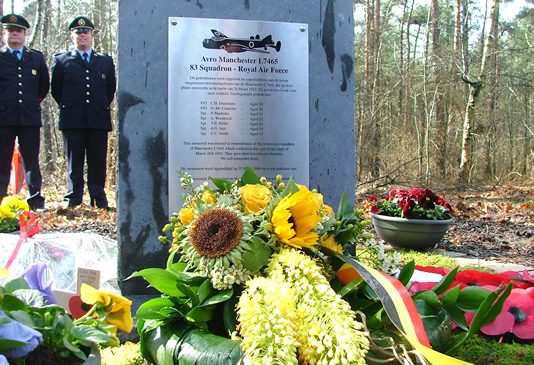
Memorial to the crew of Avro Manchester L7465 ‘OL-H’ – 83 Squadron Royal Air Force
On the 25th March 2009 representatives from the Wings Museum attended a memorial in Belgium which was unveiled in memory of the crew of Manchester L7465 who lost their lives on the night of 25/26th March 1942.
Tragically, the seven young crew members lost their lives when their Avro Manchester crashed in flames close to the village of Lichtarrt in Belgium. The crew took off from RAF Scampton having been briefed to attack Essen, but unfortunately the crew were shot down at approximately 01.30 hours between the village of Lichtarrt and Herentals. Local people were alarmed to hear a howling sound above the peaceful village of Lichtaart as the stricken Manchester began its final descent, streaming flames behind it.
The aircraft exploded in woods and the crew were instantly killed. The German Army was soon on the scene and cordoned off the area. A resistance member, Jef Melis, covertly entered the site in the woods, but quickly realised that nothing could be done for the crew.
Manchester L7465 was part of a group of bombers including Hampdens, Whitleys and Wellingtons which were briefed to bomb Essen in Germany. However few planes found their target and some dropped their bombs onto a decoy factory 16km outside of the city. Besides L7465, another Manchester which was part of the same mission crashed killing its seven man crew while landing back in England. The Manchesters had a very poor reputation due to constant problems with overheating engines, caused by the bad placing of the cylinders in the ‘X’ shape of the Vulture engines. Due to the unusual construction of the big propellers, the RPM of the Vulture engines regularly ‘slipped’ through to 3000 RPM, sometimes leading to an explosion. Another major problem that unfortunate crews found was that flying on one engine was practically impossible. Barely 200 Manchesters were built, with only 50 of them found suited for flying. In June 1942, the unfortunate bomber was taken out of service and replaced with the Avro Lancaster.
The crew of L7465 were buried with full military honours by the Germans who laid a Union Jack Flag on each of the coffins. The coffins were then carried by four young men with German Soldiers in full parade dress marching alongside at a slow speed. The church bells rang in honour of the crew as the procession approached the church. The parade stopped at the churchyard briefly and the parish priest, Mr Smets, sprinkled each coffin with holy water. The crew were finally laid to rest as a German Guard fired three salute shots into the air.
The graves were marked with a simple wooden crosses saying… ‘Hier ruhen Unbekannte Englische Flieger. Gefallen am 26.03.1942’ (Here rest unknown British Airmen. Killed in action on 26.03.1942). About one year later the names of the crew became known through the International Red Cross and the crosses were replaced with new ones. After the war the crew were moved to Heverlee Commonwealth War Cemetery.
Many years later the crash site was marked by a simple wooden memorial, and, after this had suffered by the elements, it was decided by the communities of Kasterlee and Lichaart to replace the memorial with a permanent one. The Wings Museum, which had already worked with the local community to erect a memorial to the crew of Halifax JN920 close by, were requested to assist. With help of public donations the Wings Museum provided a stainless steel memorial plaque which was fixed to a simple granite stone. The angle cut off on one side of the stone represents the cutting short of seven young lives.
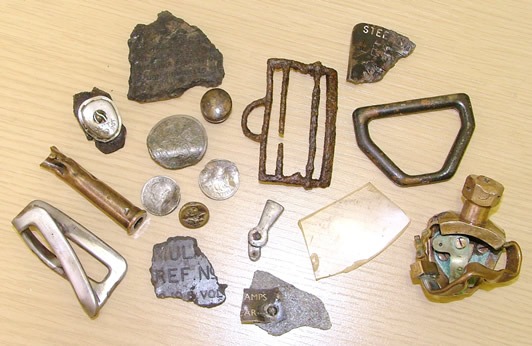
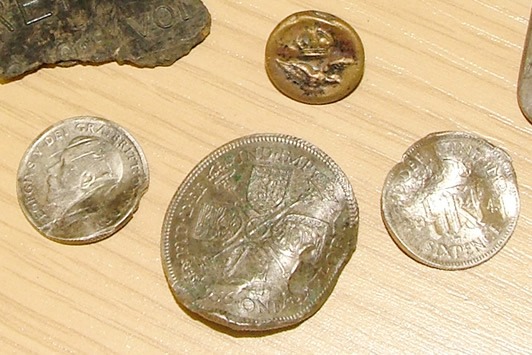
67 years later the crash site is officially marked in remembrance
On a rainy March afternoon, 67 years after that fateful night, the community, together with the local Mayor, The Wings Museum, representatives of the Fire Brigade, Belgian Army, Local History Group, and, most importantly, the family of Sgt. Albert Woodcock and Sgt. Colin Smith, was in attendance to witness the unveiling.
After a touching speech from the local history group and the Mayor of Kasterlee, representatives from the village carefully laid seven floral tributes on the memorial plinth, each one representing one of the members of the crew who paid the ultimate sacrifice.
A single bugler played ‘The Last Post’ as members of the service saluted in remembrance of the crew. As the haunting notes of ‘The Last Post’ drifted across the crash site the clouds broke and a beam of sunlight fell onto the memorial and the floral tributes. A minute’s silence followed and the remembrance service returned to the town hall for further readings.
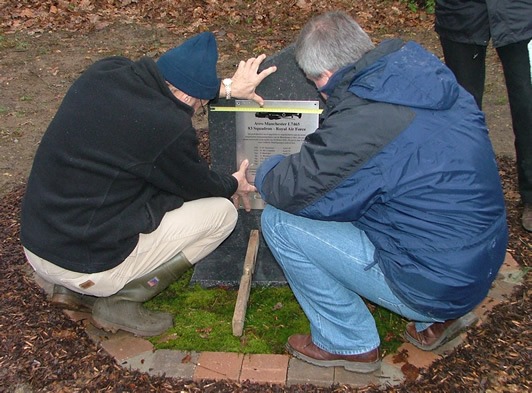
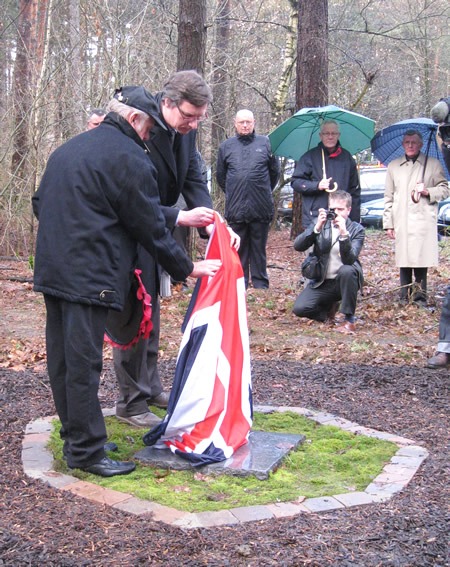
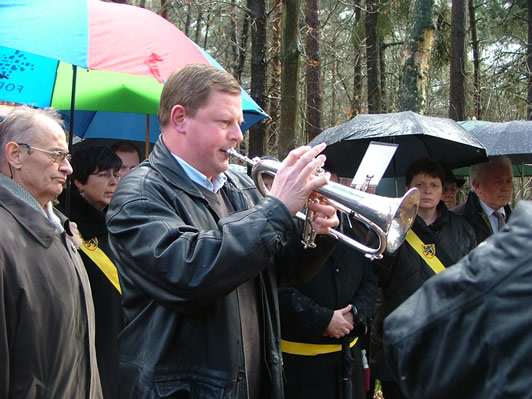
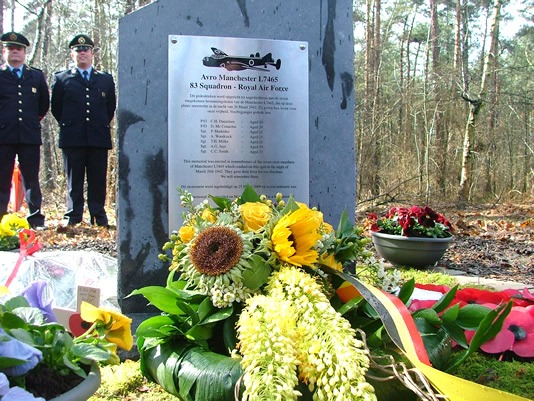
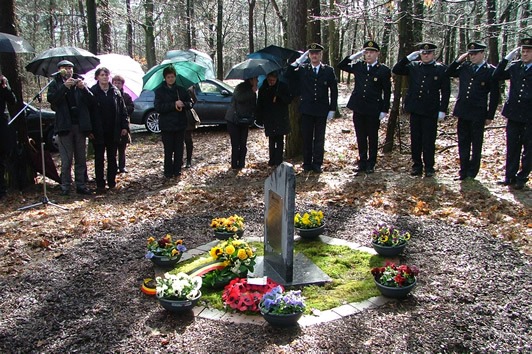
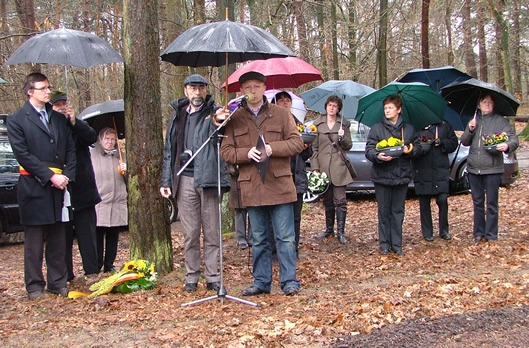
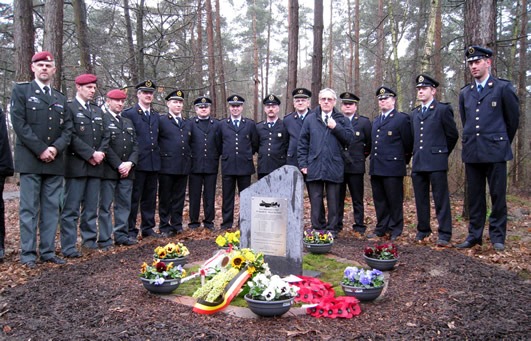
Mystery ring – solved by Jacques Boone
A very poignant reading, in perfect English, was by Mr Jacques Boone (a retired Policeman).
Several years previously he had learnt that a woodsman who had been first at the crash site had removed a ring from one of the airmen. He was afraid to come forward but treasured the ring until his death when his dying wish was to have the ring returned to England.
Jacques spent many years trying to trace which member of the crew the ring most likely belonged to. The evidence pointed to Sgt. Paul Markides, and on the 25th March 2009 Jacques’ quest finally came to an end when he was able to present the family with the ring, fulfilling the woodcutter’s wishes.
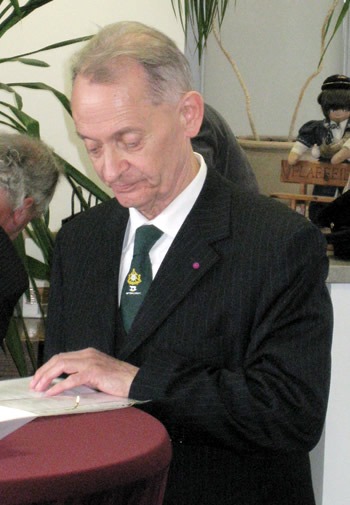

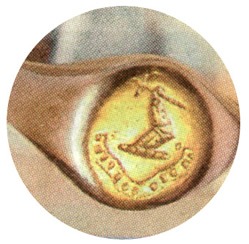
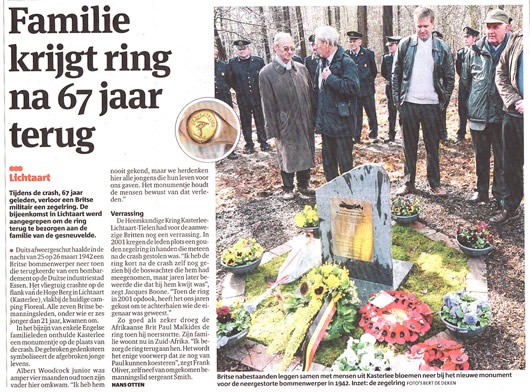
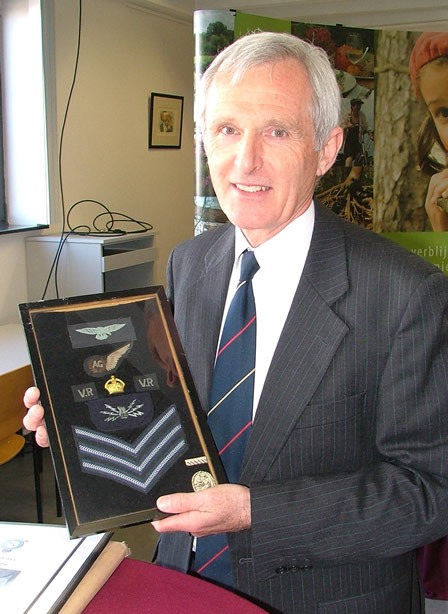
The pilot, Paul Markides, spent his leave with Colin Smith at the house of Frank Oliver’s Grandparents.
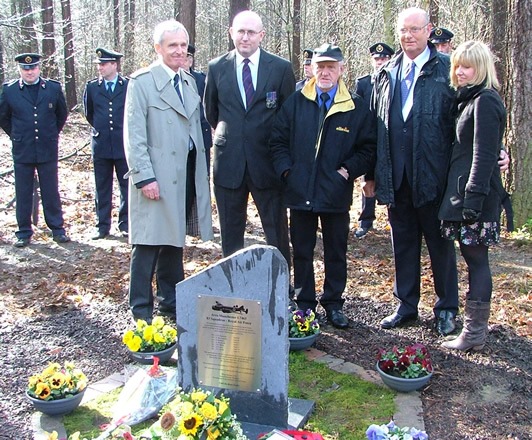
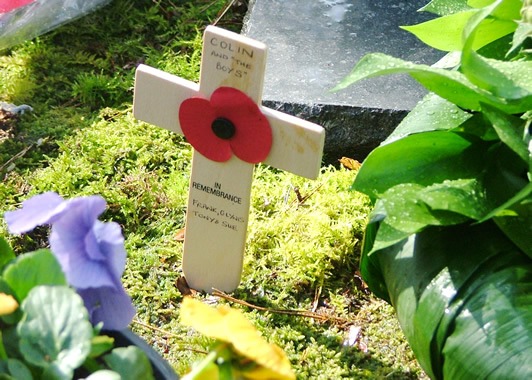
In honour of the supreme sacrifice of seven young British Aircrew lost on the night of 25th March 1942 – We will remember them…
P/O Christopher Hugh DANIELSON 62.702 – 20 years old.
Edgebaston, Birmingham.
P/O Donald McCONACHIE 404.109 – 29 years old
Windsor, Queensland, Australia
Sgt. Paul MARKIDES 778.497 – 21 years old.
Queensdale, Bulawayo, Southern Rhodesia
Sgt. Albert WOODCOCK 654.156 – 21 years old.
Accrington, Lancashire.
Sgt. Thomas Henry MILLER 514.426 – 21 years old
(No data known)
Sgt. Alan Gordon JAYE 1.043.669 – 19 years old.
Downpatrick, Northern Ireland.
Sgt. Colin Clement SMITH 1.181.165 – 21 years old.
Maidstone, Kent.
